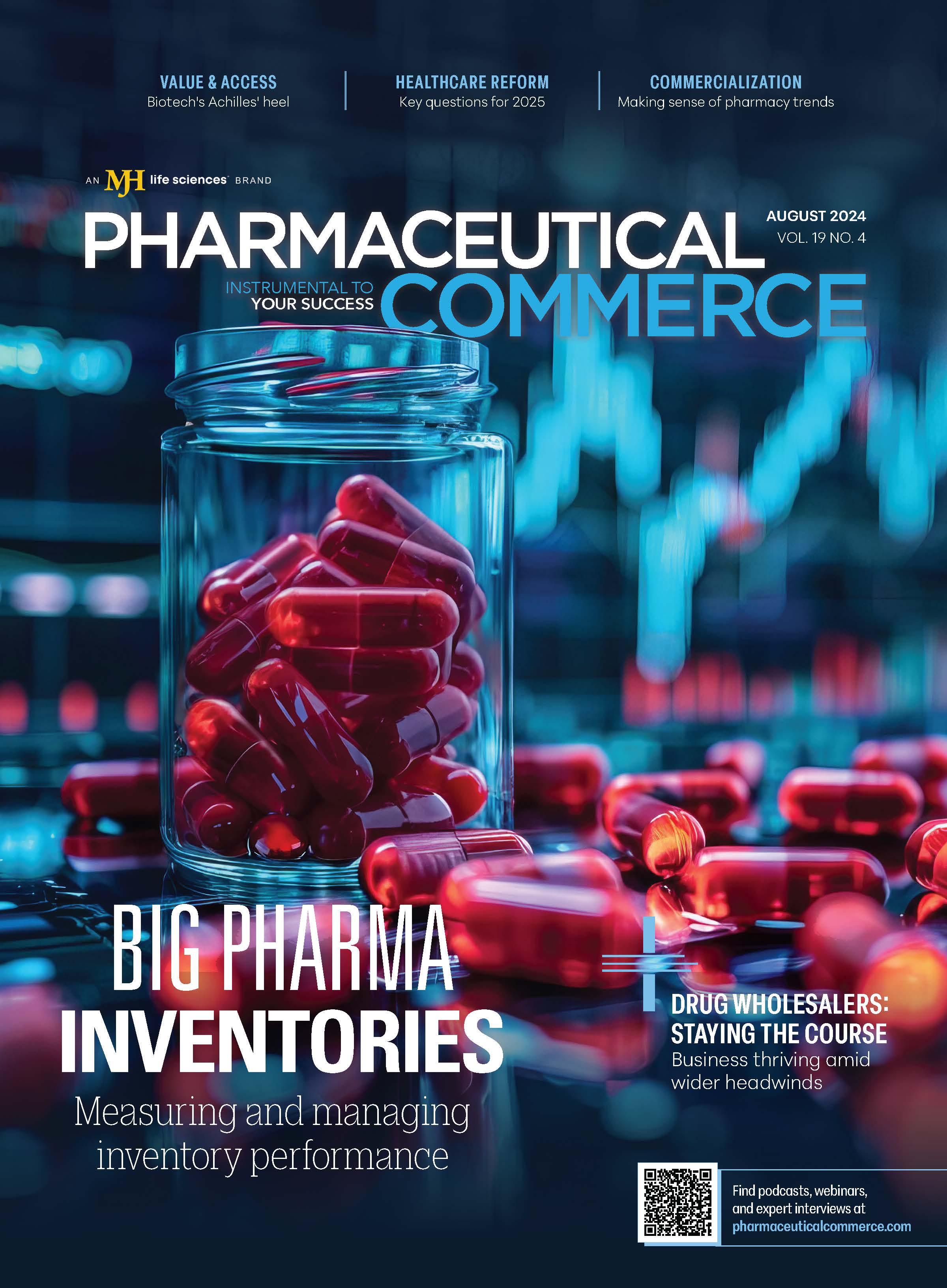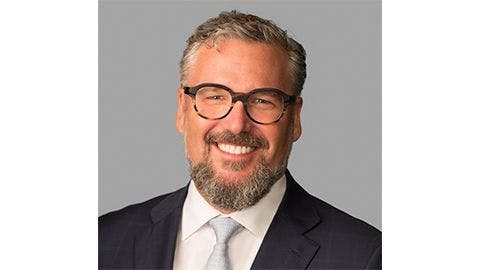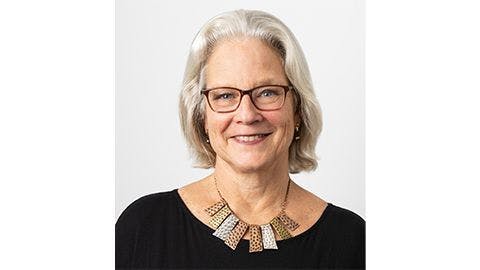US Drug Wholesaling 2024: Staying the Course
Even as pharma technology evolves, and payers argue over reimbursement practices throughout healthcare, drug wholesaling is a thriving business.
On the surface, the US pharmaceutical supply chain is fairly quiet. Every day, some 10 million prescriptions are delivered to patients via clinics or pharmacies, usually through the efforts of the wholesaler sector. Wholesalers’ trade association, the Healthcare Distribution Alliance (HDA), says that its 39 members (up several from a couple years ago) are responsible for 95% of primary distribution—i.e., taking delivery from over 1,500 suppliers, and ownership of the drugs, to be distributed to some 300,000 locations around the country.
But underneath, there are some disquieting trends, and new responsibilities that the wholesaler community is taking on. Of gravest concern is the growing number of drug shortages, which has caught Congressional attention, as well as the ongoing efforts by FDA to reduce them. Another concern, interwoven with the responsibility for compliance with the Drug Supply Chain Security Act (DSCSA), is the intrusion of counterfeit products. DSCSA also figures in the ongoing efforts by several states to import drugs from abroad (specifically, Canada) as a cost-cutting measure; the difficulty of doing so while maintaining DSCSA compliance has most states flummoxed.
All these issues and more are keeping HDA, and its CEO Chip Davis, on their toes. “Coming out of the pandemic, it’s been generally recognized that wholesalers were well prepared to manage the extraordinary situation we were confronted with,” says Davis. “I became HDA CEO the same month (March 2020) that the pandemic restrictions took hold, and there were supply chain shortages all over the country. But we were able to keep pharmacy shelves stocked throughout, which was a measure of the wholesaler community’s resilience.” Going forward, he says, will require “more transparency” in the supply chain as shortages and regulations are addressed, and “more coordination” with public institutions for pandemic preparedness and other new challenges.
US drug distribution remains dominated by the Big 3—McKesson, Cencora, and Cardinal Health—and their financial statements are dominated by their primary drug distribution business. However, each of them has made forays into neighboring parts of the healthcare ecosystem. McKesson has its own specialty pharmacy, Biologics, to address specialty pharmaceutical delivery and dispensing. Cencora acquired a specialty logistics provider, World Courier, several years ago and has aligned that with clinical trial services, especially in the booming cellular and gene therapy space. Cardinal has made recent expansions to build out its “at-Home Solutions” business to provide medical products to patients in their homes; this also includes plans to build a new 350,000 square-foot distribution center in Greenville, SC. Each of the Big 3 has a substantial patient-support business, providing hub services for prescription authorizations, reimbursement, and adherence. Finally, as noted ahead, each also has a third-party logistics (3PL) service to deliver drugs without taking ownership of them.
Resolving drug shortages
The topic of drug shortages has been ongoing for years, but has recently garnered new attention from the pharmacy community and regulators.
The range of causes is almost as broad as the number of drugs available, going from the intense demand for GLP-1 weight-loss drugs (which has led to the presence of counterfeits, a boom in compounded semaglutide formulations, and patent litigation by GLP-1 patent owners), to an ongoing problem of producing carboplatin oncolytics at an Indian manufacturer.
According to data published by the American Society of Health-System Pharmacists (ASHP), there are currently 323 drugs in shortage in the US. But according to FDA’s annual Drug Shortages report, there were 123 documented shortages as of the end of 2023. Part of the gap between those two numbers is that ASHP-reported pharmacy shortages are reported as they are encountered at individual sites, and not as a measure of a nationwide shortage. FDA, in its annual report, noted that it had “resolved” 236 shortages through a combination of manufacturer support, regulatory discretion, and, in some cases, authorizing foreign deliveries.
An IQVIA report on shortages from last autumn noted that one of the issues that attracted attention a decade ago—the problem of sole-source providers of generics—is less of an issue today; while 17 drugs in shortage were single-source, so were nearly 100 with multiple sources of supply. “Single-source generic medicines are much less common today than they were in 2011, largely as a result of sustained efforts by the FDA and industry to increase generic approvals for previously single-source drugs,” it concludes.
Still, shortages persist. This is where HDA’s Davis notes that “more transparency” is a palliative. Wholesalers, with their thousands of distribution points, put their customers on allocation when notified of a shortage. Manufacturers are currently obligated to document upcoming supply disruptions; FDA and Capitol Hill legislators are making efforts to better predict new demand (the source of about half of shortages). S.2364 (the MAPS Act), currently in Senate committee, seeks to use data analytics to “map the entire United States pharmaceutical supply chain, from inception to distribution ... to identify supply chain vulnerabilities and other national security threats.” Notably, this would include not only finished products, but active pharmaceutical ingredients as well as “key starting materials.”
DSCSA deadline
As of mid-summer, the wholesaler community (as should everyone else in the pharma supply chain) are focused on Nov. 27: the day when full DSCSA compliance comes into force. Although FDA has already given some regulatory discretion to small pharmacies (those with less than 25 full-time employees will have until 2026 to comply), it has also stated, multiple times, that it is not extending delay beyond Nov. 27.
In practice, DSCSA compliance means that trading partners will exchange data, on a unit-of-sale basis, for all pharmaceuticals being shipped from manufacturer to dispenser. This puts wholesalers squarely in the heart of the system, as they have to receive (and verify) data from the manufacturer, while conveying accurate information to their downstream partners. All this is to be done electronically, with items held in quarantine when the data can’t be confirmed.
Following a 12-month “stabilization” period (November 2023-November 2024) that the FDA provided to meet DSCSA mandates, the wholesaler community has tried to wrangle both its manufacturer suppliers and its pharmacy customers into compliance. Success is not yet complete. “We’re connected to and able to receive data from almost all of our ~500 manufacturing partners, and we’re seeing between 80% to 95% of our purchase orders have the data,” says Gregg Gorniak, VP of manufacturer operations and data services at Cencora. “However, ~25% of shipments from those manufacturers sending data are still coming in with missing or incomplete data. If that remains the case come Nov. 27, we wouldn’t be able to receive those products, or we’d need to wait until we get the data. That equates to a disruption of about 300k units a day.”
Cencora’s situation is likely to be above average among HDA members; HDA’s 2023-24 Factbook reported that 87% of manufacturers were sending the necessary data as of late 2023. Despite wholesalers’ best efforts—and the prodding from FDA—there will likely to be poorly documented shipments arriving from manufacturers after Nov. 27; a worst-case scenario would be that this will exacerbate the already painful drug-shortages situation.
Gorniak’s assessment highlights another issue—data that is sent, but is not complete. Industry experts, including the vendors of software systems for DSCSA compliance, have anticipated this: the situation calls for “exceptions management” to quickly resolve the inaccuracies. “Exceptions come in a multitude of types: technical errors, data errors, physical errors, etc.,” notes industry experts from NNIT, a pharma IT company that acquired DSCSA systems integrator Excelis Health. “A common thread across all exceptions with a trading partner is having the capabilities to capture and communicate needed details of their exception with the appropriate information. Emails have become the initial vehicle with varying degrees of the necessary information needed to align and resolve the exception."
Individual emails for each data exception is, in a word, a suboptimal solution. Various DSCSA solution providers, such as TraceLink, LSpedia, and rfXcel, offer modules that automate some aspects of exceptions management, such as checking syntax of the various codes needed.
Dealing with the corner pharmacy
A scramble similar to that of manufacturers—only worse—is expected for retail pharmacies and hospitals come Nov. 27. Their obligation is to verify the DSCSA data coming in with drug deliveries, and notify upstream partners and FDA of discrepancies. There is a general consensus that while the major chains, and major health systems, are more or less ready, there will be problems for smaller chains, hospitals, and independent pharmacies. As mentioned previously, many of these organizations will have a grace period after Nov. 27, but that period will end eventually.
“We’ve been supporting their onboarding and compliance by having their data available through our portal or by sending the data to them for well over 12 months,” says Cencora’s Gorniak. “In fact, we were the first major wholesaler that could do this. We continue to leverage our investment in analytics and relationships with the HDA to ensure we’re doing the ‘right’ thing for the patient come November and beyond.”
A less-recognized aspect of DSCSA is that it brings wholesalers and other participants in the pharma supply chain—specifically, 3PL providers under FDA licensure and qualification.
The major wholesalers each have their own 3PL businesses, as well as the major carriers such as UPS, FedEx, DHL, and others. FDA has been collecting submissions from wholesalers and 3PLs for several years, and has issued a proposed regulatory system that would involve “authorized organizations” to perform site inspections. However, a final set of rules is still pending, and FDA has indicated that this will be a multiyear rollout. The DSCSA rule will supersede licensure rules that many states have already established.
“The transition to the federal rules is expected to create some hurdles, as states with existing regulations, or those that lack regulations entirely, adapt to the new federal requirements,” according to a recent posting at IQVIA’s State Services business unit. “Further, this transition will likely not come without costs, and the road to compliance will involve financial implications and a need for robust operational infrastructure to meet the new standards.”
GDP for the USA
A quasi-regulatory program, well established in Europe but followed only partially in the US, is that of good distribution practices (GDPs). GDP, as described by an EU standard (2013/C 343/01), involves ensuring that drug products are stored and conveyed safely, with meaningful documentation of processes, and with designation of an “authorized person” who is both knowledgeable of, and responsible for, compliance within each supply chain participant. Most US manufacturers and wholesalers are GDP-compliant (even if there is not a regulatory system in place), but compliance falls off as 3PL contractors come into the supply chain.
HDA is stepping into this gap with a voluntary GDP compliance program, as organized by Chuck Forsaith, an HDA VP for its Pharmaceutical Cargo Security Coalition (PCSC). “For several years, many in the pharmaceutical supply chain have called for a program in the United States that adheres to the GDP standards of the European Medicines Agency,” he says. “This program is a natural extension of HDA’s mission, and I am proud that the PCSC is helping to lead the industry to create a new set of standards that ultimately enhance the safety and security of pharmaceutical products.”
Since its announcement in April, about 10 companies have started the application process, and one—DeSpir Logistics—is already involved in the details of accreditation. HDA has engaged with a UK firm, ASC Associates, to provide the training. Ultimately, says Forsaith, a library of resources will be made available to enable participants to keep current with industry practices.
The overall pharmaceutical delivery and dispensing system is intricate and controversial, with debates over the uncomfortably high prices of branded drugs, and uncomfortably low prices for some generics. Add to that the wrangling over federal reimbursement policies, the impact of pharmacy benefit managers, and the ongoing battle for drug importation from abroad, which would sidestep US distributors. At the same time, there is a bid for manufacturers to go direct-to-patient as exemplified by Eli Lilly’s Zepbound GLP-1 product; Lilly will even provide the physicians to write the prescription for the drug.
Nevertheless, US wholesalers have navigated these currents well, and their prospects remain positive. As Adam Fein, president of the Drug Channels Institute puts it: “Many people have predicted the demise of pharmaceutical distributors. But having studied the industry for longer than I care to admit, these businesses remain among the most resilient in the US healthcare system.”
— Nicholas Basta is Editor Emeritus and Founder of Pharmaceutical Commerce.























